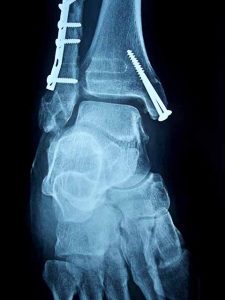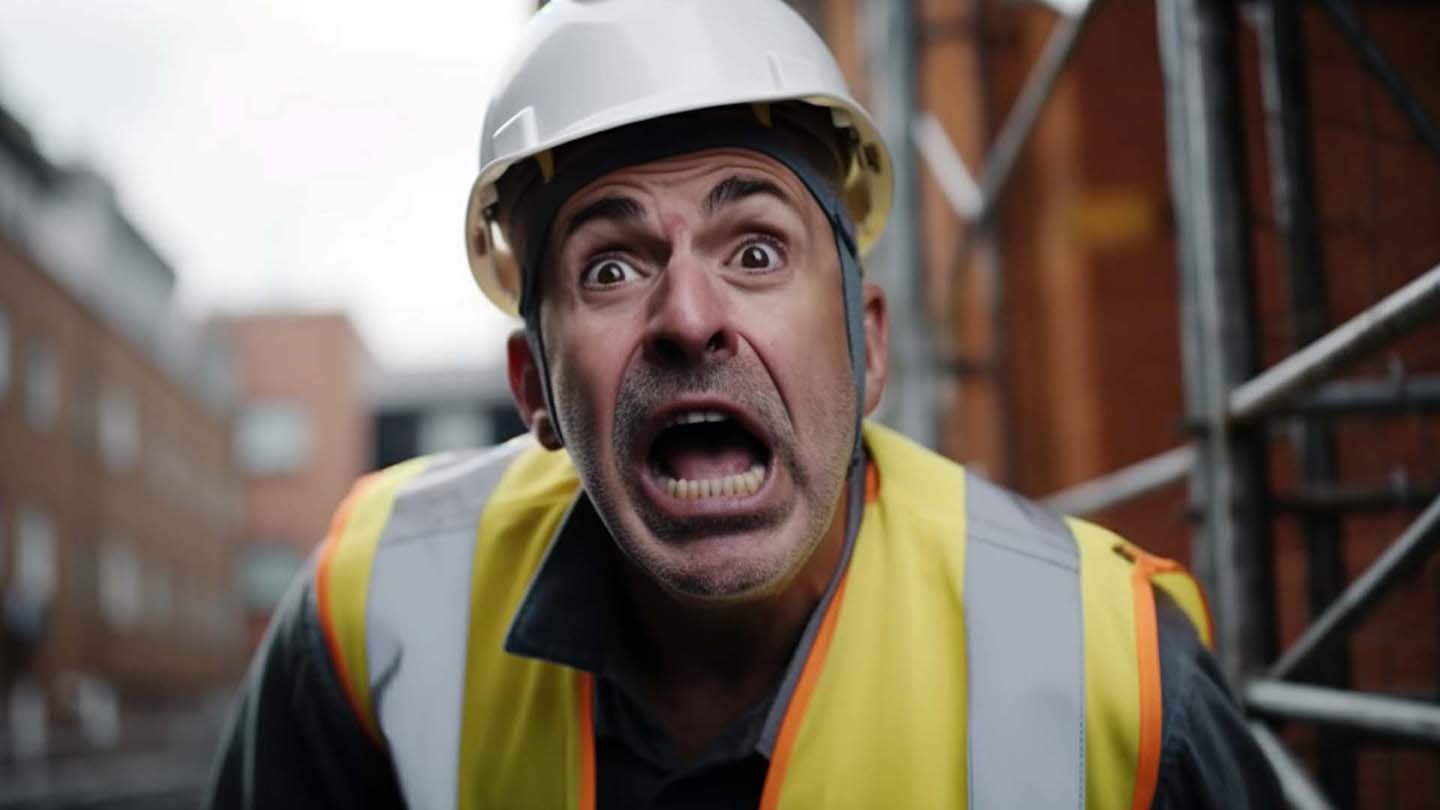Physical & Financial Injury
The construction industry is one of the most dangerous in the UK. Heavy machinery and materials, heights, excavations, loud noise, chemicals, and moving objects are all potential hazards that don’t exist for many other professions. Such high-risk conditions significantly increase the possibility of experiencing lacerations, fractures, broken bones, or even worse, death.
Regardless of whether they are employed or self-employed, the financial consequences of a construction worker sustaining an injury can be hard-felt. Many people may struggle to support themselves or their family if they were unable to earn a wage for 3 months let alone 12. This concern is often in the back of construction worker’s minds, although far too often, the importance of having protection in place isn’t fully realised until it is too late.
And it is not just the added risk construction workers face on site. Given the physical demands of the job, it is not unusual for construction workers to experience much longer recovery times before being medically cleared to return to work. Even when an injury is sustained outside of work, unless a suitable insurance policy is already in place (such as accident only insurance for construction workers), the injury can soon cause a severe financial trauma.
Financial pressures can often force people to try and return to work too soon. Whilst some may be able to grin and bear the pain, this can often lead to far longer recovery times or more permanent injuries. Worse still, those that have not been medically cleared to return to work may find that other insurances they rely (such as professional indemnity or public liability) are null and void. Depending on the terms of the other policy, should they cause harm or damage to another person or someone else’s property whilst being classed as unfit for work, they could find themselves being personally liable to pick up the bill.
Below is a look at six of the most common types of injuries sustained by construction workers and the NHS-recommended timescale for the patient to heal. However, it should be noted that for those with physically demanding jobs, the full recovery time before they can safely return to work is often much longer. Since every individual and each injury is unique, the severity and location can tremendously impact the recovery time.
Broken/fractured arm or wrist

Following an X-ray to establish the extent of the injury, it is common that a plaster cast will be used to keep the arm/wrist in place until the bone has healed. In some cases, the broken bone(s) may require surgery.
Although the NHS suggests that a broken arm or wrist can take just 6-8 weeks to heal and for the removal of the plaster cast, this is very much a minimum. The healing process can easily take 12 months for more severe injuries requiring surgery or where there has been multiple bone damage.
If a construction worker is lucky enough to have escaped lightly, there may still be need for some physiotherapy as the muscles and ligaments in the arm/wrist will be weakened. Following a broken arm or wrist the patient may notice a loss of strength or limited use of the hand. Sometimes this can make it very difficult to use certain tools, lift heavy items, handle machinery, and even screwing a bolt could become challenging. So, construction workers should not expect to be returning to their regular working duties in a hurry!
Broken or fractured collar bone
A common injury caused by a fall or blow to the shoulder is a broken collarbone or fractured clavicle.
This type of injury is excruciating and causes significant restrictions to a construction worker due to the immobility of the shoulder and upper body. The collarbone or the clavicle connects to the sternum (breastbone), so a fracture could severely limit arm movement, particularly on the side of the break. This will make lifting, carrying, or operating tools extremely difficult and potentially very dangerous. Any overhead work will be impossible throughout the healing process due to the pain and limited range of motion.
The clavicle also plays a role in overall balance, especially when carrying heavy items. Therefore, a fracture could affect the worker’s balance; climbing scaffolding would be particularly dangerous.
Generally, collarbones require 6-8 weeks to heal with regular gentle exercises and physiotherapy. However, doctors are likely to advise against strenuous activities and construction workers should not anticipate a return to work for at least 10-12 weeks.
Broken or fractured leg.

A simple slip or fall can fracture or even break the bone in the leg. If there is a breakage, putting pressure on the leg or even walking is likely to be excruciatingly painful for some time.
Surgery is often needed when the fracture is severe, with surgeons implanting metal wires, plates, and screws. In a worst-case scenario, injuries may be so severe the patient requires an operation like having the Ilizarov apparatus fitted to align and reshape the damaged. The recommended time to wear the Ilizarov frame and rehabilitation sessions is approximately 6 months to one year.
For more standard breaks and fractures, depending on the extent of the bone damage, the NHS advises the healing time takes between 6-8 weeks for minor fractures and usually 3-6 months for a severely broken bone. During recovery, the patient may require crutches or a wheelchair and could expect a year or longer of follow-up and physiotherapy appointments.
It is important to note that even after the healing and rehabilitation, some people may experience long-term effects such as chronic pain, reduced mobility, or an increased risk of arthritis in the injured joint. Always consult a healthcare provider for an accurate diagnosis, treatment plan, and recovery timeline.
Even after the bone has healed, the leg muscles may be weakened from disuse, and physical therapy is often required to regain strength and mobility. During this rehabilitation phase, which can take additional weeks or months, there may still be some pain or discomfort when walking, particularly when first starting to bear weight on the leg again. Considerable time will be needed for the leg to recover, be mobile, and walk pain-free.
All-in-all, those with physically demanding professions should plan on needing at least 3 months to recover and before being able to return to work.
Broken or fractured ankle

Something as simple as a trip, minor fall or jumping and not landing correctly on your feet can cause a fracture or break the bone(s) in the ankle.
A broken ankle can have long-term implications for a construction worker. This debilitating injury immediately causes functional impairment because the ankle and foot support the whole body weight, making walking painful and disabling the usual daily activities. The impact of causing further damage will often develop arthritis in the injured ankle.
Keeping to the recommended physiotherapy sessions is crucial because there might be reduced mobility in the broken/fractured ankle, even after the bone has healed. And a severe break may even cause difficulties when walking and standing for long periods. Also, future care is required because a traumatised ankle may be vulnerable to further sprains or fractures. Therefore, building strength through gentle exercise in the tendons and ligaments around the ankle is vital.
For minor damage to the ankle bones, the doctor may advise treatment is not required or to wear a special boot to support the ankle. Alternatively, surgery may be necessary if the alignment of the broken bones needs fixing.
Construction workers should not expect to return to work for at least 8 weeks even for a minor broken or fractured ankle bone. Depending on the damage, this can take much longer with regular physiotherapy sessions. Using crutches or a walking frame to keep the weight off the ankle is recommended throughout the healing period which obviously would prevent any work on construction sites.
Torn ligaments
Torn tendons and ligaments, muscle damage, and trapped nerves are common injuries in the construction industry and often caused by heavy lifting, slips or falls, and persistently twisting the body.
The healing process for a sprained ligament is approximately 2-4 weeks. However, you should expect between 6 months to one year for a full recovery for seriously damaged ligaments. During this time, the patient is likely to be advised to avoid any strenuous activities to ensure no further damage to the injury, which could spell a lengthy absence from work.
Slipped disk
A slipped or herniated disc is when the soft tissue between the bones in the spine are pushed out of place. Lifting heavy items, falling and landing on the back, and straining the back with incorrect movements are some causes of disc slipping.
You can expect approximately 4-6 weeks of rest and gentle exercises for the tissues surrounding the disc to repair. Should a badly damaged disc be left untreated, it could lead to permanent nerve damage, causing severe and long-term issues in the lower back and legs.
Lumbar decompression surgery treats the compressed nerves in the spine, but the NHS only recommends this if the pain and symptoms persist.
Those with strenuous jobs, such as bricklayers, scaffolders, and builders, must take 3-6 months off work to recover from decompression surgery.
Accident Only Insurance For Construction Workers
Given the additional risks and longer recovery times faced by construction workers, comprehensive Income Protection policies can often exceed an individual’s expectations when it comes to cost.
This is where an Accident Only Insurance policy can be considered since it is far more focused on addressing the primary the concerns of UK construction workers especially those of a younger age who are statistically less at risk of long-term illnesses.
The policy pays a monthly benefit of up to 70% of normal income if the policyholder suffers an accident (either in or out of work) which results in a loss of earnings. Because the policy only focuses on accident there is no need for applicants to declare their medical history and so the policy can be set up very quickly.
The simple and transparent pricing mean that an online quote takes just seconds!
For more information and to obtain a personalised quote visit https://blacklioninsurance.co.uk/accident-only/




